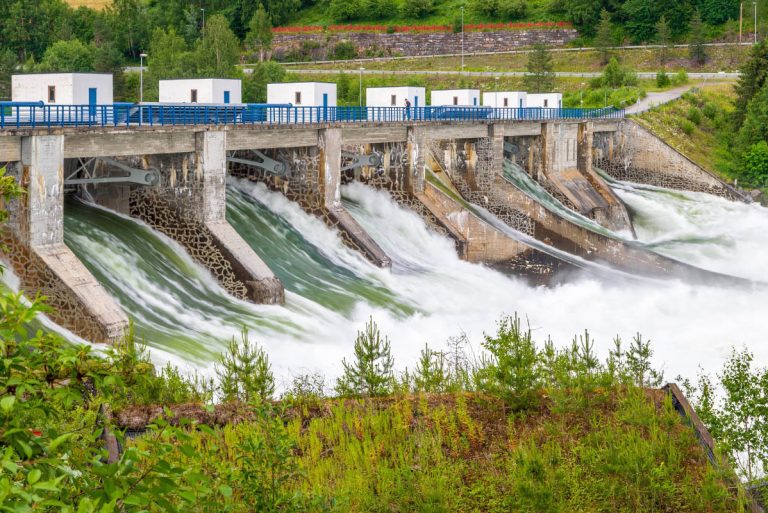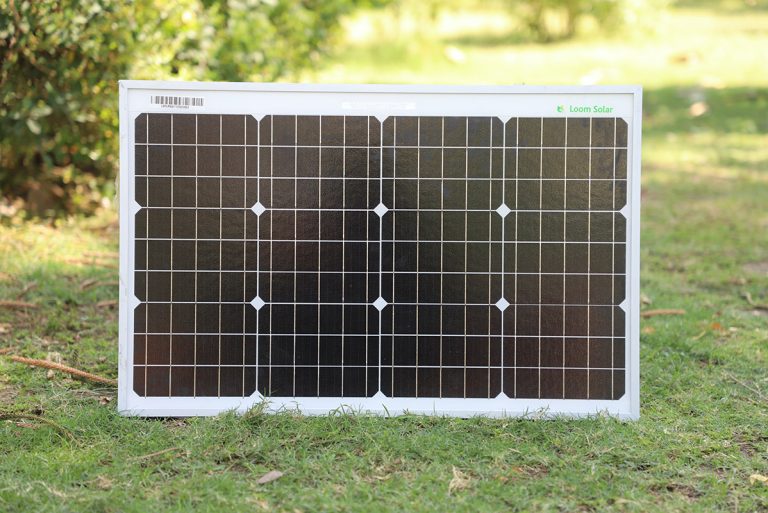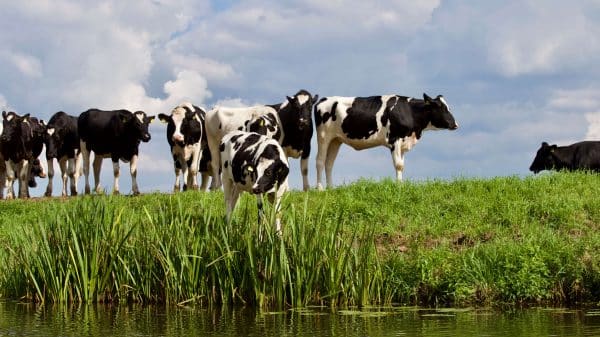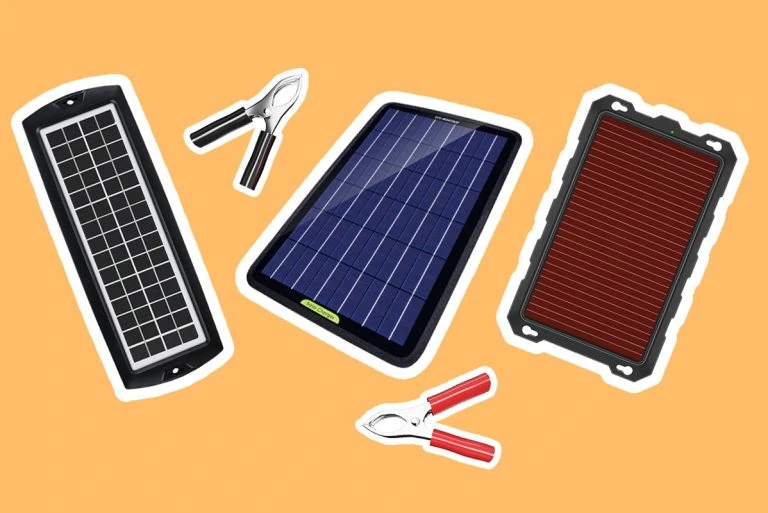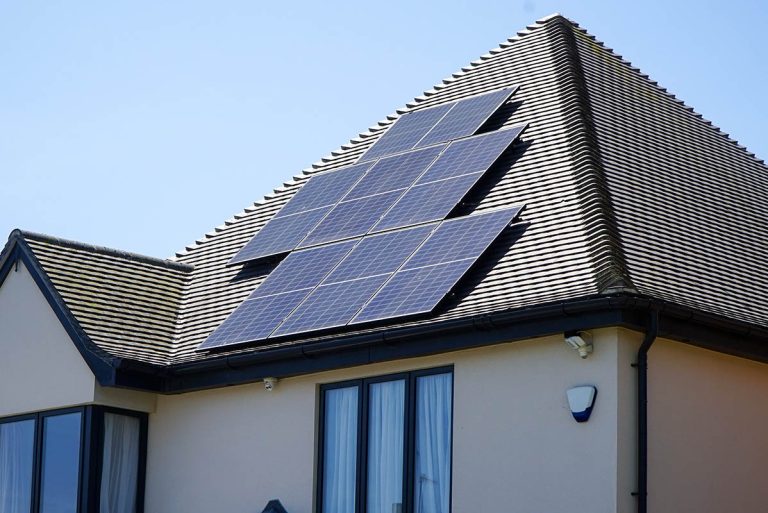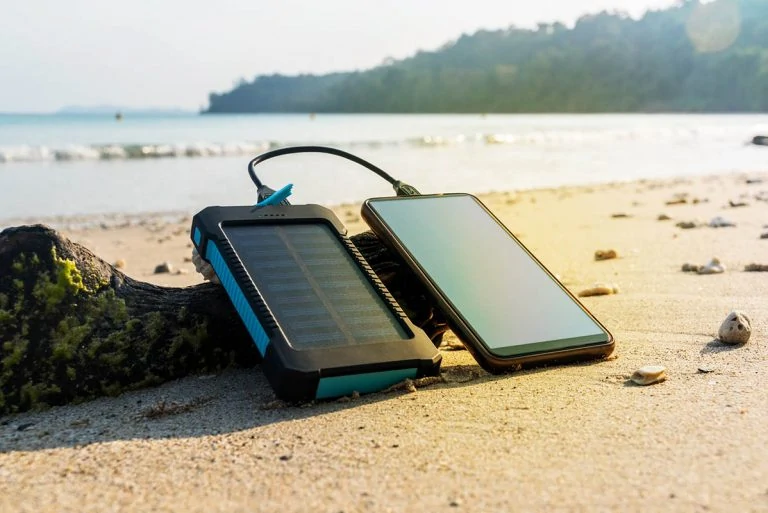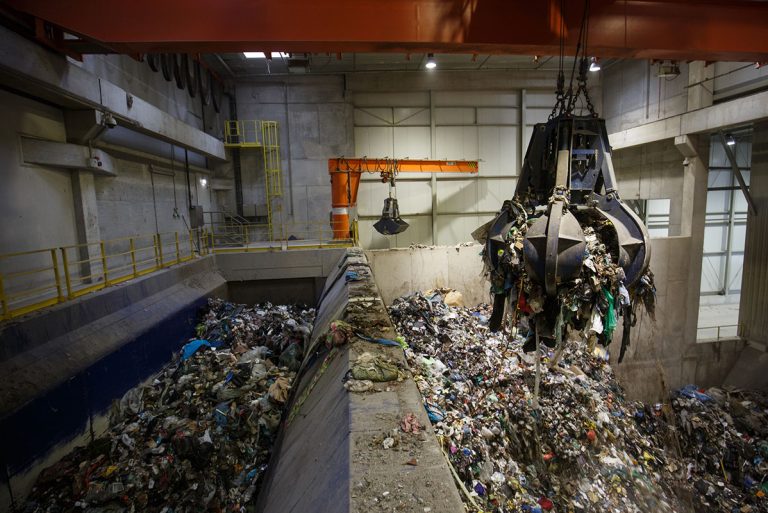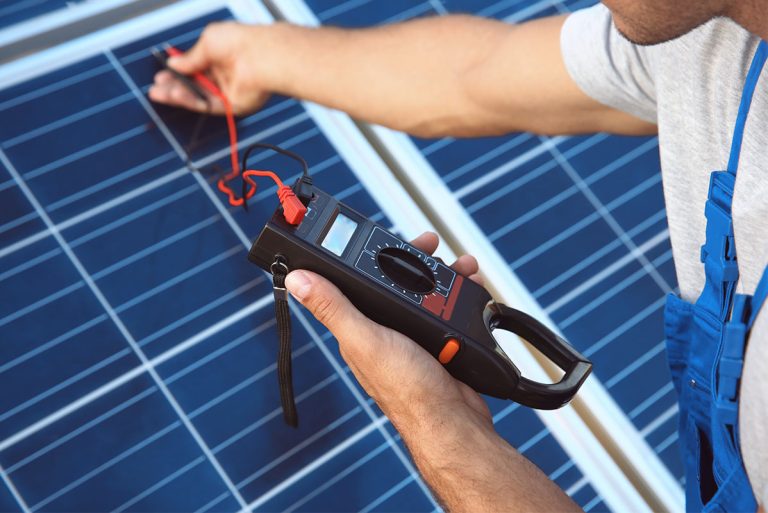Would you believe the energy generated by large hydroelectric power plants is not considered renewable energy by the California Energy Commission?
Many other states hold the same — or similar — view.
This is just one example of how the public perception of hydropower as a great technological achievement of cheap, renewable energy is rosier than reality.
In other ways as well, as our climate crisis dries up the Earth in many places, any advantages of hydroelectric power are quickly becoming liabilities.
In this article, you’ll find out exactly how the apparent pros of hydroelectric power could actually be viewed as cons — with one exception.
There’s only one real pro of hydroelectric power: energy efficiency
When hydropower is used on a microscale, it can be an inexpensive source of renewable energy with little to no environmental damage. This is one clear pro of hydroelectric power; it is a relatively efficient source of electricity.
The qualifier relatively is needed because efficiency is dismal when you’re talking about electricity generation.
The U.S. Energy Information Administration states that 60% of all energy used to create electricity is lost during its production.
Let that sink in for a minute, especially in light of the current global energy crisis.
So how exactly is hydroelectric power energy efficient?

What is energy efficiency?
There are a couple of different ways the term energy efficient is used.
According to the Environmental and Energy Study Institute, energy efficiency is a term that refers to using less energy to perform a task (not wasting it).
Think of EnergyStar rated appliances as being more energy efficient than others that haven’t earned that status.
Another way to describe energy efficiency is by how much usable energy a source produces (output) from what it has to start with (input). It’s often given as a percentage.
In the case of electricity, the percentage is a ratio between the energy that a source generates (electricity output) and the sum of all the energy inputs required to create it, multiplied by 100.
When it comes to making electricity, there are a number of inputs to factor into the levelized cost of electricity (LCOE). These are costs of:
- Capital
- Fuel
- Operation
- Environmental damage
- Down times at the energy plant
After considering all of these elements, here is a graph of the efficiencies of the most common energy sources:

You see that hydroelectric energy far surpasses all types of nonrenewable sources of energy (fossil fuels) in efficiency.
Hydropower also outdoes the energy efficiency of solar (317% vs. 207%).
Notice from the graph that wind knocks energy efficiency out of the park (1,164%)! Geothermal is better than hydro at 514%.
Notably, unlike hydroelectric power, solar and wind efficiencies are growing rapidly due to active R&D, especially in recent decades.
However, although this pro of hydroelectric power is relatively strong, its value is diminished by all of the major cons of hydroelectric power.
So what’s wrong with hydroelectric power?
Here are six major cons of hydroelectric power. Depending on the source, you may find some of these cons of hydropower are actually presented more like positives but if we are being critical, the conclusions drawn can be vastly different.
1. Hydroelectric power is no longer renewable
Many states actually do not count large-scale hydroelectric power as renewable energy, but they do include small-scale hydroelectric power on their renewable energy balance sheets.
What they consider large or small varies from state to state, but 25-30 MW is usually the dividing line between them.
What are Renewable Portfolio Standards (RPS)?
The renewable energy numbers game that states play is related to their renewable portfolio standards (RPS). This is their method to demonstrate how they are achieving their state-mandated carbon emissions goals.
States require in their RPS by specified percentage exactly how much electricity sold by utilities comes from renewable resources.
It’s policies like RPS that drive growth in renewable energy production in the U.S. In fact, since the early 2000s, approximately half of renewables growth is due to RPS, according to the National Conference of State Legislatures.
More recently, some states have introduced Clean Energy Standards (CES). The difference between RPS and CES depends on how a state defines a renewable vs. a clean source of energy. In most cases, clean refers to carbon-free energy sources.
The map below shows you how the states stack up on RPS.

Here are how the states with ambitious climate goals compare on RPS/CES:
| State | New RPS/CES Target | By Years |
|---|---|---|
| California | 100% | 2045 |
| Colorado | 100% | 2050 |
| Connecticut | 44% | 2030 |
| Delaware | 40% | 2035 |
| Maine | 100% | 2050 |
| Maryland | 50% | 2030 |
| Massachusetts | 35% | 2030 |
| Minnesota | 26.5% | 2025 |
| Nevada | 100% | 2050 |
| New Jersey | 50% | 2030 |
| New Mexico | 100% | 2045 |
| New York | 70% | 2030 |
| Oregon | 100% | 2040 |
| Virginia | 100% | 2045/2050 |
| Washington | 100% | 2045 |
| Washington D.C. | 100% | 2032 |
| Guam | 100% | 2045 |
| Puerto Pico | 100% | 2050 |
Source: NCSL
However, our point about hydroelectric power as no longer renewable is not simply to be in agreement with many states.
It is much larger than this.
Effect of our climate crisis on hydroelectric power
The August 18th, 2022 front page of the New York Times sums up the effect of our climate crisis on hydropower nicely:
“Heat and drought have reduced hydropower in Norway, threatened nuclear reactors in France and crimped coal transport in Germany.”
And that’s just Europe. In only two months.
Here’s how Europe’s energy crisis is devolving on the infographic below. See how hydroelectric is down. Nuclear is down due to the increased temperature of water making it impossible to cool down radioactive rods.
Note the double-digit growth in solar and wind. Unfortunately, coal is picking back up due to Russian president Putin shutting off gas to some regions. The small rise in gas is due to increased gas imports from the U.S.
As widespread, prolonged drought — termed aridification — occurs the world over, humans must acknowledge then rapidly adapt to the fact that if carbon emissions are not drastically reduced this decade, freshwater will become increasingly difficult to find.
Water is the new gold.
For example, as the deadline passes for stakeholder states dependent on the Colorado River for life and livelihoods to draw up a plan for water conservation and equitable allocation as river levels plummet due to our climate crisis, the federal government will step in and do it for them to avert catastrophic collapse.
This could lead to armed conflict among thousands — if not millions — of people as water scarcity intensifies.
So, when mega-drought conditions are slowly expanding across the nation, maybe it’s not a good idea to include hydroelectric power in the reliable energy supply mix? All other forms of energy production (except biomass) use a lot less water as the diagram below shows.
(Note: PV = photovoltaic or solar; L= liter; MWh = megawatt hour. 1 MWh = 1 million watt hours.)

Effect of our climate crisis on hydroelectric power in California
The Colorado River feeds the two largest reservoirs (when filled to capacity) in the U.S.: Lakes Mead and Powell.
Here’s a short video on the amazing Colorado River:
Lake Mead is the water source for more than 25 million people and supplies agricultural land across three states. Currently, the mega-drought has pushed it to its lowest level ever.
The extreme drought in the U.S. West is so bad that you can see its effect on the Colorado River and the major hydroelectric dams it feeds from space.
In California, hydroelectric power plants are shutting down — sometimes for the first time in history — as reservoir levels drop to their lowest levels ever. Climate crisis-intensified heatwaves driving encroaching aridification (low snowpack levels and less rain are the cause).
The state imported 30% of its energy in 2020 but is still struggling to make up for hydropower shutdowns resulting in 3.5 GW power shortfalls. So, power outages become commonplace, if not because of hydropower deficits, then for outages to protect grid infrastructure during wildfire season. (1 GW = 1 billion watts.)
The future of hydroelectric power in a climate crisis
Hydroelectric power water deficiencies due to our climate crisis severely restricting the availability of freshwater are not just in the USA and Europe as discussed in the preceding sections.
Heavily industrial parts of China are feeling the heat, too, in the longest heatwave in world history (70+ days) now in Summer 2022. Some municipalities are shutting down factories for days at a time to protect the grid.
Consequently, China’s economy has already contracted this year. Only 2.8% growth is expected this year (down from the country’s projected 5.5%).
Since much of the world’s goods originate in China, a cascade effect resulting in supply chain disruptions leading to further economic downturns is predicted globally.
Furthermore, many aging dams are literally falling apart, unable to withstand extreme weather. For example, under the onslaught of torrential rains — also an effect of our climate crisis — they could collapse, triggering massive evacuations or mortalities.

Source: Wikimedia
Perceptive readers see where this is going.
It is unwise — in fact, foolish — for governments to count on freshwater as being readily available any more for hydroelectric power. Especially when there are renewable energy sources with steady, assured inputs: solar, wind, and geothermal energies.
In fact, a 2022 study clearly forewarns that because of global heating leading to increased aridification, the future of hydroelectric power in the U.S. and elsewhere looks grim.
Here are just a few of the astounding predictions from that study:
- 61% of all global hydroelectric dams will be located in water basins with very high or extreme risk for droughts, floods or both by 2050.
- By or before 2050, 20% of existing hydroelectric dams will be in areas of high flood risk. (Today, it’s a 4% risk.)
- Currently, 2% of planned dams are in water basins with high flood risk. By 2050, that risk increases to 40%.
- 80% of all planned dams are in areas with high risk to further biodiversity loss. (Since 1970, freshwater fish populations have declined by 84%, and hydroelectric dams are considered the major cause.)
What is not emphasized enough is that the planet is in a record La Niña, or “cool phase,” of the El Niño Southern Oscillation (ENSO).
Can you imagine what the temperature — and the drought level — will be when the hotter El Niño returns in 2023?
On a somewhat optimistic note, however, seawater is readily available as a tidal hydroelectric power source. Hopefully, marine hydrokinetic energy research and development will scale up soon on a grand scale to complement solar, wind, and geothermal energies.
2. Hydroelectric power is environmentally destructive
There are several aspects of hydroelectric power that are environmentally destructive. They fundamentally alter river ecosystems and the surrounding wildlife habitat.
Fish ladders
Readers may smile at the notion of fish ladders on some — but not all — conventional hydroelectric projects and believe that hydroelectric power is eco-friendly.
As a series of ascending pools (steps), fish ladders, or similar elevators, flumes, or bypass channels to get around turbines, are the most commonly used methods to help the fish move through dams.
Other ways to accomplish this feat include barges, tankers, trucks, or even an airplane!
Dams with no fish passage modification in the Columbia River Basin block more than 40% of the native habitat once freely accessible to salmon and steelhead trout before dam construction.
Here is a schematic that shows one of the methods to allow fish to get by a dam.

Installing fish ladders was a part of most hydroelectric dam projects since the 1890s. In fact, the Federal Power Act of 1920, the Fish and Wildlife Coordination Act of 1934, and the Northwest Power Act of 1980 are examples of just three laws requiring fish passages at all hydroelectric dams on public lands.
Unfortunately, not all dam builders or local governments took the laws seriously.
Only with the insistence of fish advocates to at least save some native salmon and other fish species was fish ladder technology and design taken seriously and equipment installed. Survival rates slowly increased.
Most of the time. At least for adult fish.
Sadly, in some cases such as in a study from the Northeast U.S., only 3% of fish make it home to their spawning ground even with a ladder present beside the dam.
Assisting juvenile fish around the dams was a different story.
Results from the Pacific Northwest are mixed for juveniles. Some years have a survival rate of <3%, while others can be as high as 60%. Overall, success in terms of higher survival rates increased in the 1990s and later compared to those of the 1960s, likely due to advanced methods and more diligence.
Below is a diagram of one passage setup to assist juvenile fish around hydroelectric dams.

Tragically, it’s not just the fish ladders that are literal stumbling blocks for fish trying to swim up river or head out to sea.
Warmer water temperatures and lower river levels due to our climate crisis are perfect conditions to allow a fish parasite to thrive in Idaho to California rivers. As a result, massive fish kills in the hundreds of thousands of several species — including endangered Chinook salmon — become common.
Reservoir construction
In addition, the construction of reservoirs has led to massive destruction of habitat, including that of many endangered species.
A large hydroelectric power plant built on level terrain may inundate thousands of square miles, wiping out forests, wildlife habitat, and farms.
Entire human villages and towns are relocated in many cases as well. This uproots identity-forming cultural attachments to the land.

As the world faces the 6th mass extinction of species, wild nature is further encroached upon to make way for roads, cattle ranching, soy and corn crops for animal feed, palm oil plantations, and new housing developments. More destruction to make way for additional hydroelectric power plants doesn’t make biological or economic sense.
Without biodiversity, human civilization is at risk of collapse, too.
Here are some stunning statistics on how dams have led to massive biodiversity losses in the U.S. according to the group American Rivers:
- Seven dams on the Coosa River in Alabama led to more than thirty freshwater species going extinct.
- East Coast populations of Atlantic salmon have been decimated by dams blocking access to spawning
- 29% of West Coast salmon populations are now gone. One-third of the remaining salmon populations are threatened or endangered.
Environmental concerns with reservoir water
The water in reservoirs is stagnant. There are several problems with this.
Algal blooms in reservoirs
Nutrient buildup in reservoirs leads to algal blooms, sometimes toxic ones, aggravated by climate crisis-induced warming. Since the algae are consuming much of the oxygen, little remains for fish, leading to higher fish mortality.

Source: National Institute of Environmental Health Sciences
Methane production in reservoirs
Underwater plants, meanwhile, also suffer from lack of oxygen consumed by algae. As the plants die and rot, they release methane, a potent greenhouse gas that contributes significantly more to global heating than carbon dioxide.
Recent research concludes that previous estimations on exactly how much methane is released from dam reservoir surfaces are too low. Current studies show reservoir surfaces release 25% more methane than previously thought.
In other words, more hydroelectric dams will accelerate our climate crisis. This fact is more evidence to support the conclusion that hydroelectric power is not clean energy.
Higher evaporation rate in reservoirs
Thirdly, unmoving water evaporates more quickly than moving river water. Thus, in a prolonged drought during heatwaves, reservoir levels plummet. Shutdowns of energy production result when levels get too low as described below.

Source: Wikimedia / Jules Verne Times Two / julesvernex2.com
Sedimentation in reservoirs
According to the U.S. Bureau of Reclamation, the buildup of sediments in reservoirs from agricultural runoff and heavy rains is a major problem. Up to 35% of the total water holding capacity of all U.S. dams has been reduced over time due to sediment loading alone (not counting effects of global heating that causes rapid water loss through evaporation).
As dams age, sedimentation worsens and reduces the normal lifespan of functional dams, presenting multiple problems including:
- Decrease in reservoir storage capacity
- Plugging up dam outlets and reservoir water intakes
- Lowering water quality, negatively impacting both aquatic life and human recreation
- Decrease in nutrient flows downstream, even as far away as coastal ecosystems
- Increase in degradation of downstream habitats
The last point may seem counter-intuitive. Wouldn’t sediment-free water help downstream habitats?
“Hungry water” in hydroelectric power
Researchers describe the water that has left its sediment behind in reservoirs as “hungry water.” It is likely to accelerate erosion in the downstream river’s channels, banks, and beaches while it’s picking up sediment to replace what it lost back in the reservoir. In the process, this hungry water erases critical habitat features along and under the downstream water channels. These features, such as wetlands, pools, and runs, are needed for wildlife.
Viral spillover
Additionally, as wild animals’ habitat is severely reduced by human encroachment, the likelihood of viral spillover events from wild animals to humans increases. The chance of this happening also increases with climate change.
While humanity is still dealing with SARS-CoV-2, the virus that causes Covid-19, it certainly doesn’t need more pandemics.
River scarcity
For 100 years, the U.S. has built more dams than any other country. So it’s logical to ask: Is there any space left on rivers for more dams?
Unbelievably, thousands of new hydroelectric dams are planned or under construction worldwide, even in protected areas, and some on free-flowing, wild rivers. This construction would affect approximately 200,000 miles of river, surrounding ecosystems, and human settlements.
If completed, the 2010 installed energy capacity from hydroelectric power (1,000 GW) would double in the next few decades by new hydropower plants.
That’s a big “if” because today, on a global scale, most investment is in solar and wind — not hydropower. In fact, the corporation that built the world’s large hydropower plant, the Three Gorges Dam in China, invests heavily in wind and solar.
That corporation is probably very relieved today it did so.
Low water levels in the Yangtze River are forcing widespread closures in the region due to megadrought and prolonged heatwaves as this video shows.
In the U.S., because of the dam collapses in California and Michigan in recent years, there’s no frenzy to build more dams like there was in the early 1900s. A drying climate is cementing that attitude.
However, there is still a lot of interest in the U.S. in converting smaller, non-powered existing dams to small-scale hydropower plants.
Several recent studies in China, Norway, and Spain have shown that small-scale hydroelectric power (<30 MW) is not cost-effective and comes at huge social and environmental costs. It takes significant amounts of money to fortify and equip non-powered dams so that they could generate just a relative trickle of electricity.
Natural resources are limited, even more so in a climate emergency. Humans must use them wisely if civilization is to make it to 2050. More hydroelectric power plants of any size can’t be justified.
3. Hydroelectric power is not sustainable
The material used to construct hydroelectric power plants is primarily cement, one of the most unsustainable materials on the planet, that when set, becomes concrete.
Interestingly, cement is the most widely used material on Earth, after water.
To give you some idea of how much concrete (in cubic yards) is in a hydropower dam and associated structures, here are two examples:
- Hoover Dam in Nevada: 4.36 million
- Grand Coulee Dam in Washington: 12 million
The concrete in the Hoover Dam, according to the U.S. Bureau of Reclamation (BR),
“…would build a monument 100 feet square and 2-1/2 miles high; would rise higher than the 1,250-foot-tall Empire State Building if placed on an ordinary city block; or would pave a standard highway 16 feet wide, from San Francisco to New York City.”
Similarly, the concrete in the Grand Coulee Dam, according to the BR,
“…could build a sidewalk four feet wide and four inches thick and wrap it twice around the equator (50,000 miles). You could build a highway from Seattle, Washington to Miami, Florida.”
Concrete is unsustainable for two reasons. First, the extremely high heat needed to manufacture it requires energy from burning fossil fuels, which produces greenhouse gases and contributes to our climate crisis. Cement also releases carbon dioxide in a chemical reaction while being mixed with other materials during manufacture.
If cement were a country, it would be the 8th largest carbon emitter in the world.
Here’s a diagram to show you just how bad the concrete industry is in terms of carbon emissions:
Furthermore, most concrete is not recycled although in theory it can be. A study in California showed only 2-8% of concrete was recycled. The rest is landfilled after demolition.
The good news is that Solidia is making significant strides in greening cement. Carbicrete in Canada makes carbon-negative concrete. But there is still a long way to go to get the entire cement industry on board.
4. Electricity from hydroelectric power is not the cheapest available
Hydroelectric power advocates boast that it’s the cheapest electricity source known today.
Solar and onshore wind captured that spot in 2022.
Here is the breakdown measured in dollars per kilowatt hour ($/kWh) for the most common sources of electricity:
| Electricity Source | Retail Price ($/kWh) |
| Onshore wind | 0.02-0.04 |
| Solar | 0.03 |
| Geothermal | 0.03-0.05 |
| Hydro | 0.05 |
| Fossil fuel | 0.04-0.14 |
| Nuclear | 0.25-0.30 |
As noted above, in a climate crisis that is already leading to economic downturns on both national and personal levels, humans must spend limited resources, including money, wisely.
This is more reason to choose solar, wind or geothermal to meet your household energy needs.
5. Hydroelectric power is not cost-effective to produce
Even though it is commonly believed that operating costs are minimal for hydroelectric power, comprehensive research in 2014 showed this was not the case.
Of 245 large dams reviewed in that study, all built between 1934 and 2007, they were too expensive to yield a positive return — without even taking into account environmental costs. In fact, the average costs were 96% higher than the estimated costs. Additionally, on average, they took 44% longer to build than anticipated, decreasing the return on investment.
So, in drought-ridden areas, it may be permissible to allow hydroelectric power plants to function as long as possible under their current license, but then let the licenses expire.
Certainly, no new hydroelectric projects should be initiated anywhere, including renovating small non-power dams for hydroelectric power as explained above. Doing so is not economically viable.
Instead, focusing on tidal energy development — where no dams are required — looks promising since it relies on unlimited seawater.
Of course, renewable solar, wind, and geothermal energies must center predominantly in the future energy portfolio of humanity.
6. Aging hydroelectric dams are a big risk in intense floods
Just as our climate crisis is responsible for supercharging extreme drought worldwide, it is also the reason for intense flash flooding. When aging or poorly constructed dams are in the flood zone, disasters aren’t too far behind.
Dangerously, the world is entering a period of “mass aging” of dams. Tens of thousands of dams are 50 years old. Many others are approaching 100 years.
In the U.S., by 2030, 70% of dams will be over 50 years old. In 2019, the U.S. Army Corps of Engineers estimated there are approximately 15,600 dams classified as “high-hazard Structures.” Thus, it’s no surprise the American Corps of Civil Engineers gave the U.S. a “D” grade on its dams in the Group’s 2017 Report Card.
There are some dam removal projects going on in many countries, including the U.S., but these are costly and many take years to complete. So far, the nonprofit group American Rivers estimates only 1,956 dams (<2%) have been removed so far in the U.S.
The Biden Administration recently signed into law the Infrastructure Investment and Jobs Act. It includes $2.4 billion for the removal or retrofit of dams. This is a start, but it’s not enough.
Meanwhile, flash flooding is intensifying everywhere.
In 2017, the tallest dam in the U.S., Oroville Dam in California, partially failed. Heavy rains damaged the main and emergency spillways, forcing the evacuation of 188,000 people in three counties. Repairs cost over $1.1 billion. Operations were shut down for three weeks.
As a second example, in 2021, two hydroelectric dams collapsed in Michigan, forcing the evacuation of 10,000 people and causing millions of dollars in property damage.

Source: Wikimedia / William Croyle, California Department of Water Resources
Like most dams in the U.S., they were non-federally owned. Since the owners declared bankruptcy, it’s unlikely flood victims will win in court for damages.
So, building new hydroelectric dams in the 21st century climate crisis is clearly a high-risk investment. Fortunately, significantly less risky solar, wind, and geothermal energies exist to power our homes and businesses.
Bottom line: hydropower may not be the clean energy source we need for the future
The only pro of hydroelectric power is that it is a relatively efficient form of energy.
It’s common to read on the internet that the major pros of hydroelectric power are that it’s:
- Renewable energy
- A reliable energy source
- Very energy efficient
- Cheap source of electricity
- Cost-effective to build and operate
- Able to meet peak electrical demand.
Sadly, none of these statements is true about hydroelectric power, especially in our climate emergency.
Global heating is drying up the Earth with mega-droughts all over. Scientists predict that unless carbon emissions are drastically reduced by 2030, there will be intensifying aridification (drying) on a global scale.
Since the water cycle is no longer natural — also because of our climate crisis — water should not be viewed as a renewable resource like it once was. Water has become different from solar, wind, and geothermal energy — all of which are truly renewable.
So, without enough — or any — water, hydroelectric power plants won’t generate electricity, let alone meet high demand.
It’s also true that major cons of hydroelectric power have become worse over time:
- Adverse environmental impact
- Risky aging dams
With increasing deforestation and massive loss of biodiversity worldwide, building more dams and reservoirs will restrict wild nature even more. Doing so will bring wild animals in closer, more frequent contact with humans, making spillover events of viruses infecting humans more likely.
Today, most rivers that meet the requirements for massive hydropower have already been dammed. If there were to be more upstream diversions of freshwater — already a precious resource — to build more power plants, communities and wildlife downstream would receive even less water, if any.
